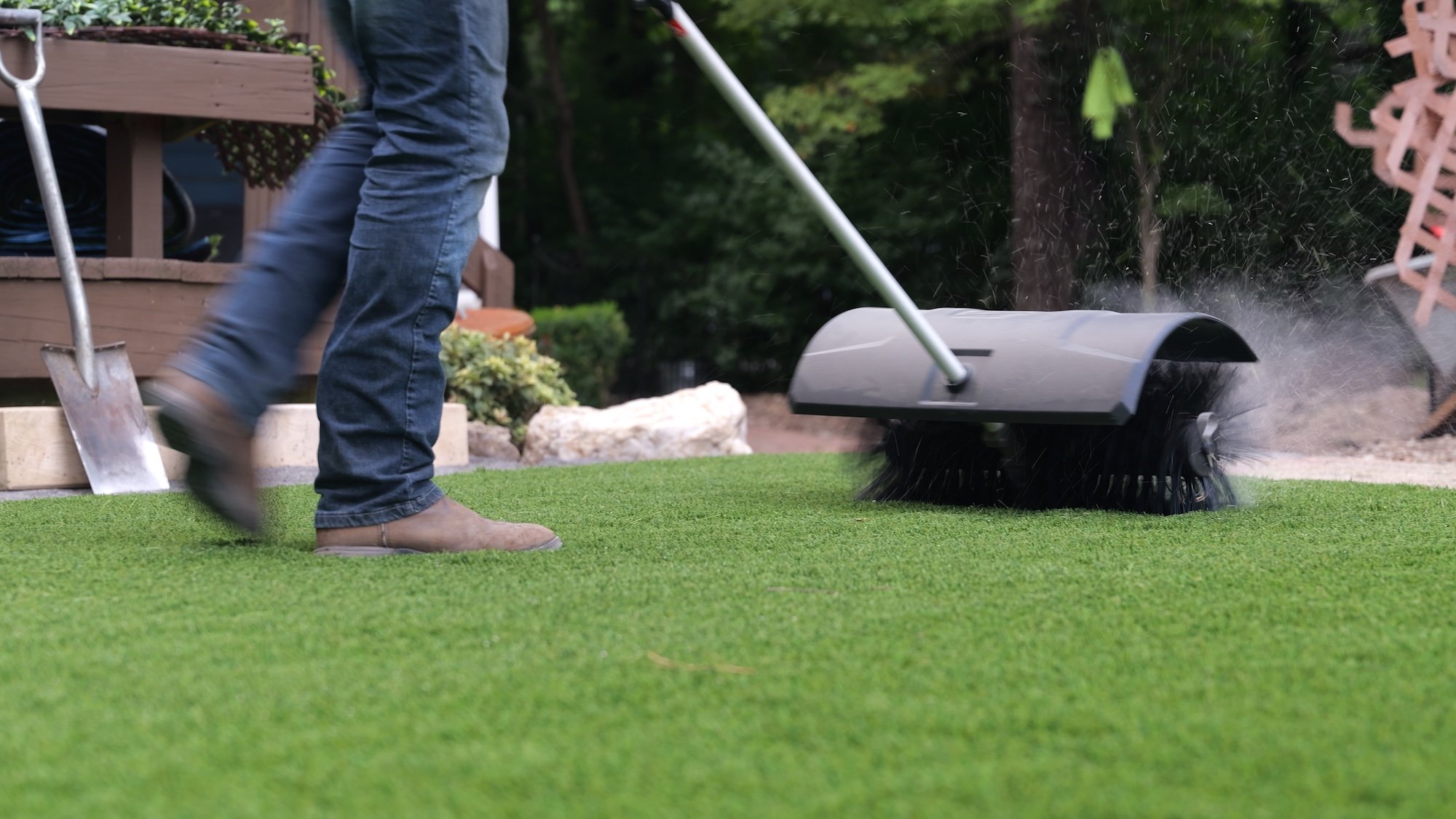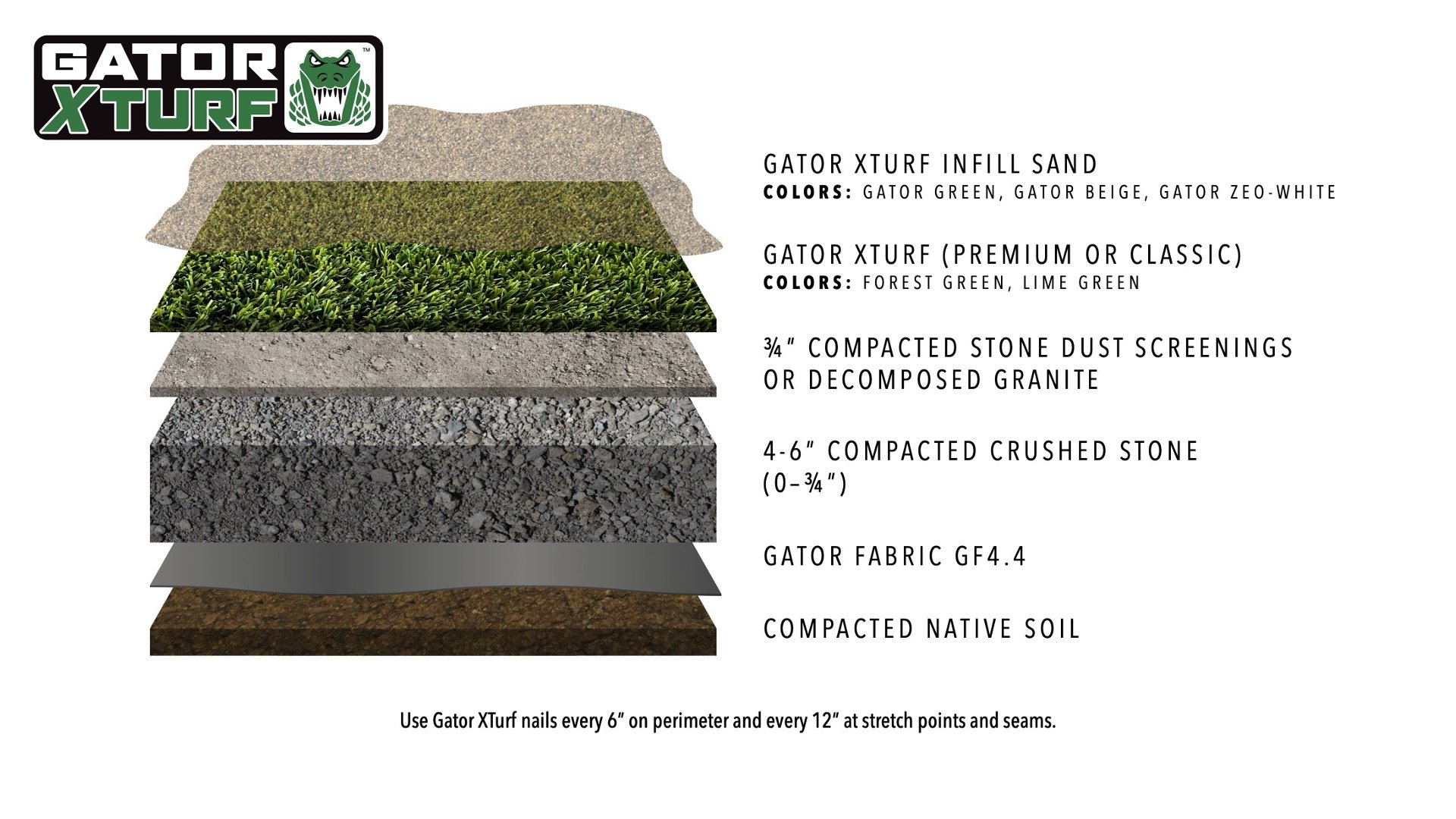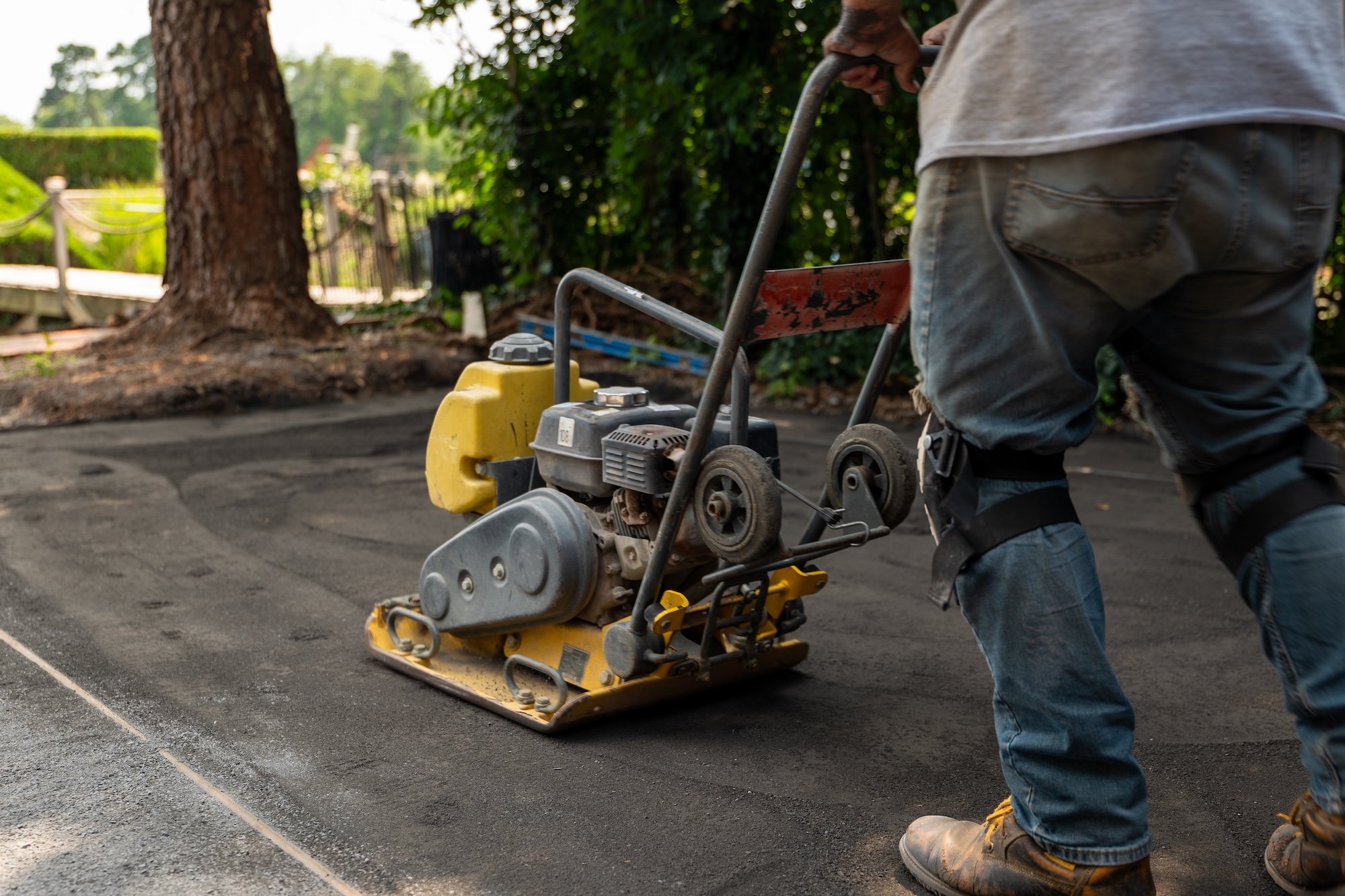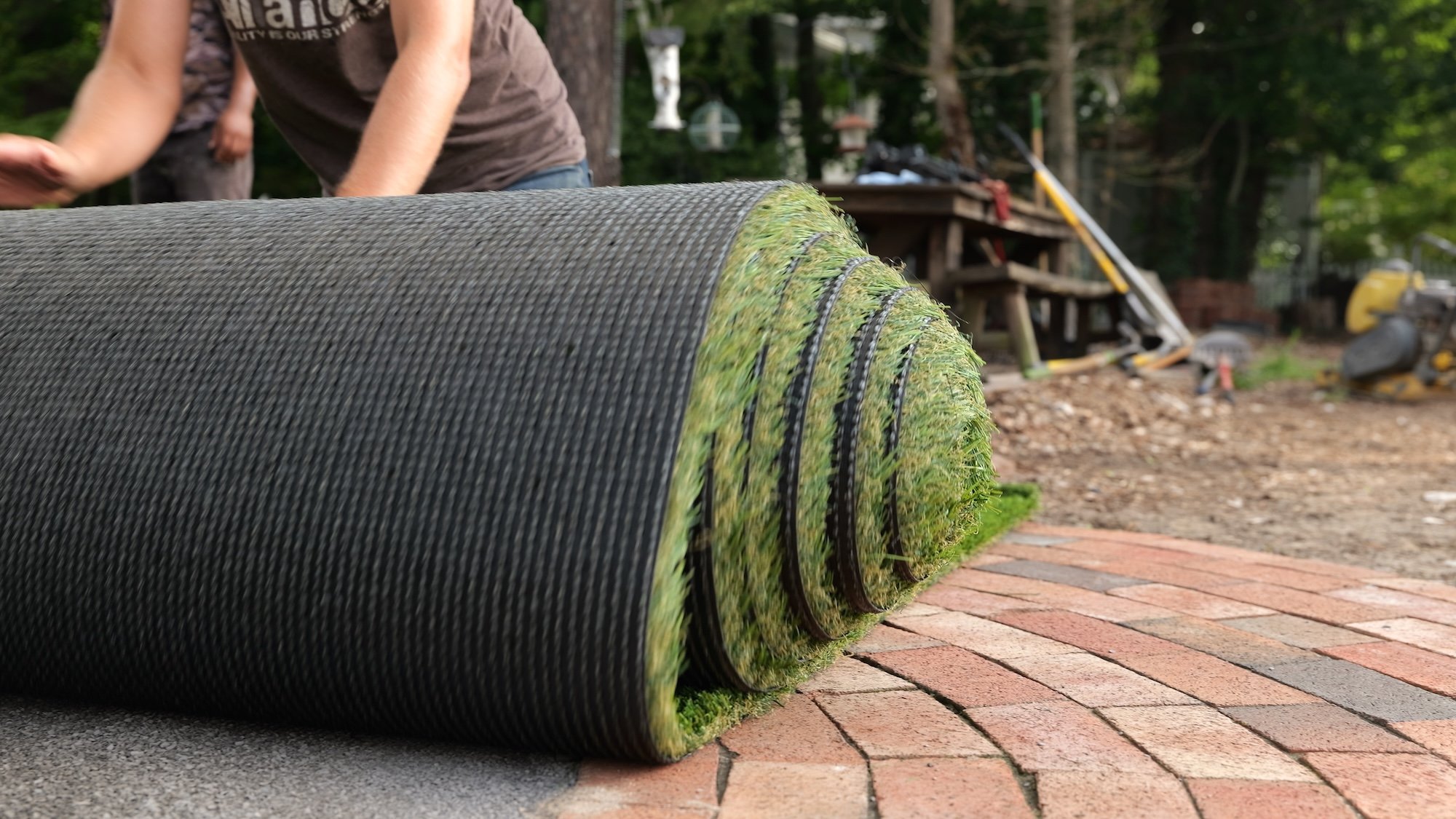If you can install pavers, you can install turf. Here’s why.
If you install pavers, installing turf will feel familiar to you. In this post, we’re going to explain the similarities between preparing a base for pavers vs. turf and highlight the tools for a typical turf job, a few of which you probably already have.
Believe it or not, installing turf is very similar to installing pavers. And with a complete installation package like the Gator X-Turf Collection, the job just got even easier. Gator X-Turf is the first and only system for artificial turf. It includes:
A simple yet versatile offering of artificial turf blends
Non-woven geotextile
Seam tape
Nails
Glue
Infill sand
Just like when installing pavers, a successful project starts with a solid base. Does the cross-section below look vaguely familiar?
When installing pavers, a crushed stone foundation and a sand or chip setting bed is used. Stone dust should be avoided because it tends to trap and hold moisture. In a turf application, however, stone dust is exactly what you want to use.
So why stone dust for turf but not for pavers?
First, think about load distribution. Concrete pavers distribute loads very well. Turf does not. A solid base that’s firm and packs well is going to be needed, and stone dust fits the bill.
With pavers, you also have to worry about trapping moisture because it can cause efflorescence in pavers and joint failures. Since stone dust notoriously traps and holds moisture, it isn’t great for paver installations. With turf, we’re more concerned about stability than moisture. The turf blades and backing won’t be negatively impacted by moisture. Also, drainage holes are built into the turf, which allow water to evacuate from the surface. However, if the turf was installed over a sand or chip setting bed, it wouldn’t feel stable underfoot. (Think of walking over a blanket at the beach.) The sand would move underfoot and eventually become uneven and lumpy. Stone dust adequately solves these issues.
We provide step-by-step instructions for preparing the base for an artificial turf job in this post:
How To Prepare The Base For A Gator X-Turf Job
And for a refresher on properly preparing your native soil and base, be sure to review these two articles:
5 Expert Tips For Compacting Native Soil
5 Expert Tips For Compacting Base Material
Once the base is complete, you’re ready to roll out your turf. It’s a relatively simple installation process: Kick the roll, stretch it out, spike it down, and repeat. We detail some useful tips and tricks in this post:
Tips & Tricks For Installing Gator X-Turf
Now let’s talk tools. If you install pavers, you’ll already have some of these on hand. To install artificial turf, here’s what you’ll need.
Your Turf Tool List
Like we said, if you know how to install pavers, you can install turf! The base preparation is nearly identical (with the exception of the stone dust, of course) and you already have many of the tools needed to do the work. So, are you ready for your first X-Turf install?
Be sure to request an X-Turf Sample Box to get a firsthand look at the different components in the system!






